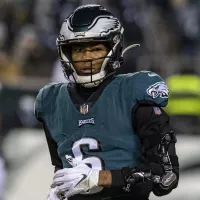NJ Transit is a state-owned public transportation system serving New Jersey and parts of New York and Pennsylvania. It provides bus, light rail, and commuter rail services, connecting major commercial centers within New Jersey to New York City and Philadelphia. In 2024, NJ Transit recorded a ridership of 225,620,400.
1908: Start of Cut-Off Construction
Construction of the Lackawanna Cut-Off by the Delaware, Lackawanna and Western Railroad began in 1908.
1911: Completion of Cut-Off Construction
Construction of the Lackawanna Cut-Off by the Delaware, Lackawanna and Western Railroad completed in 1911.
1941: CNJ's Blue Comet Cancellation
Prior to the 1941 cancellation, the CNJ operated Blue Comet trains (Jersey City-Atlantic City) and some local trains on the Monmouth-Ocean-Middlesex (MOM) line route.
1967: Last Passenger Service to Lehigh Valley Cities
In 1967, passenger service previously provided jointly by the Lehigh Valley Railroad and the Central Railroad of New Jersey to Allentown, Bethlehem and Easton was discontinued.
1970: End of Erie Lackawanna long-distance service
In 1970, Erie Lackawanna last provided long-distance service with the Lake Cities
1976: Conrail Formed
In 1976, Conrail was formed through the merging of a number of financially troubled railroads.
July 17, 1979: NJ Transit Founded
On July 17, 1979, NJ Transit was founded as an offspring of the New Jersey Department of Transportation, with a mandate to address pressing transportation problems and authorized by the Public Transportation Act of 1979 to acquire, operate, and contract for transportation services.
March 1980: MOM Line Proposed
In March 1980, the Monmouth-Ocean-Middlesex (MOM) line was originally proposed by the Ocean County Board of Chosen Freeholders.
1983: NJT Assumes Commuter Rail Service
In 1983, NJ Transit assumed operation of all commuter rail service in New Jersey from Conrail.
1983: Service Ended on the West Trenton Line
Service ran on the West Trenton Line prior to 1983.
May 2001: New Jersey Acquires Lackawanna Cut-Off Right-of-Way
In May 2001, New Jersey acquired the right-of-way of the Lackawanna Cut-Off.
October 21, 2001: Newark Liberty International Airport Station Opened
On October 21, 2001, NJ Transit opened a new station at Newark Liberty International Airport.
December 15, 2003: Secaucus Junction Transfer Station Opened
On December 15, 2003, the Secaucus Junction transfer station opened, connecting NJ Transit's two commuter networks in northern New Jersey.
2004: NJT's Cost Estimate for West Trenton Line in 2004
As of 2004, NJ Transit's estimate of the cost for the West Trenton Line was $197 million.
October 31, 2005: NJT Takes Over Clocker Service
On October 31, 2005, NJ Transit took over Clocker (NY–Philadelphia) service from Amtrak.
2006: Opposition to MOM Line in 2006
As of 2006, the Monmouth-Ocean-Middlesex (MOM) line was opposed by Jamesburg and Monroe Township.
February 2008: Governor Withdraws Monmouth Junction Alignment
In February 2008, New Jersey Governor Jon Corzine withdrew the Monmouth Junction alignment from the MOM Plan, choosing to endorse the two remaining alternate alignments via Red Bank or Matawan-Freehold.
November 2008: Study Commissioned to Explore Extending Raritan Valley Line
In November 2008, the Lehigh Valley Economic Development Corporation (LVEDC), along with both Lehigh and Northampton counties, commissioned a study to explore extending the Raritan Valley Line to the Lehigh Valley region of eastern Pennsylvania.
May 2009: Agreement on Route from Ocean County to Red Bank
In late May 2009, representatives of the three counties agreed to back one potential route from Ocean County to Red Bank, instead of to Monmouth Junction. The line's southern terminus would be in Lakehurst, running through Lakewood along existing freight tracks to join the North Jersey Coast Line in Red Bank. It also includes the possibility of a spur between Freehold and Farmingdale.
June 2009: Ground Breaking for ARC Project
In June 2009, the Access to the Region's Core (ARC) project broke ground with public commitments of $3 billion from both the Federal Transit Administration and the Port Authority.
2009: Start of ACES Operation
In 2009, NJ Transit began operating the Atlantic City Express Service (ACES).
2009: NJT Study on Lackawanna Cut-Off Restoration
In 2009, a study by NJ Transit estimated the cost to bring the Lackawanna Cut-Off line back into operation to Scranton, Pennsylvania.
August 2010: Federal Funds Received for MOM Line Investigation
In August 2010, NJT received $534,375 in Federal Funds to investigate the possibilities of a MOM line. Since that time there has been no further advancement of the project.
October 7, 2010: ARC Project Suspended
On October 7, 2010, the Access to the Region's Core (ARC) project was suspended due to concerns that the State of New Jersey would be solely responsible for projected $5 billion in overruns.
October 27, 2010: Governor Cancels ARC Project
On October 27, 2010, Governor Chris Christie made a final decision to cancel the Access to the Region's Core (ARC) project.
2011: NJT Equips Bus Fleet with Real-Time Location
In 2011, NJ Transit announced it would equip its entire bus fleet with real-time location, creating the basis for "next bus" scheduling information.
2011: End of ACES Operation
In 2011, NJ Transit concluded operating the Atlantic City Express Service (ACES).
2011: Lackawanna Cut-Off Restoration Project Begins in 2011
In 2011, the Lackawanna Cut-Off Restoration Project from Port Morris to Andover began.
October 2012: Hurricane Sandy Damage
During Hurricane Sandy in October 2012, NJ Transit's rail operations center was flooded, damaging locomotive engines and rail cars.
October 2015: FTA Requests Preliminary Engineering Study in October 2015
In October 2015, the Federal Transit Administration (FTA) requested a preliminary engineering study to update cost figures for the Lackawanna Cut-Off restoration project.
2016: Restart of Construction Projected in 2016
Based on projections, the restart of construction on the Lackawanna Cut-Off Restoration Project, including work on Roseville Tunnel, was to occur in mid- to late-2016.
2016: Project Included in TIP for Fiscal Years 2016-2019
The West Shore Route project was included in NJ Transit's portion of the North Jersey Transportation Planning Authority's Transportation Improvement Program (TIP) for the fiscal years of 2016–2019.
2018: Projects in Progress as of 2018
As of 2018, projects were in progress to replace auxiliary power cables, traction power, and signal and communication devices along the HBLR that were affected by Hurricane Sandy.
2018: Final Design Completed for Hudson River Rail Tunnel
As of 2018, the final design for the new Hudson River rail tunnel was completed and being advanced through the U.S. Department of Transportation TIGER grant.
2018: Preliminary Engineering Begins for Hudson-Bergen Light Rail Extension
In 2018, preliminary engineering began for the Hudson-Bergen Light Rail extension in Jersey City.
2019: Expected Final EIS Completion in 2019
In 2019, the final Environmental Impact Statement (EIS) for the Hudson-Bergen Light Rail extension was expected to be completed.
2019: Original Expected Completion of Glassboro-Camden Line
The Glassboro-Camden Line was originally expected to be completed by 2019, but faced construction delays.
2019: Project Included in TIP for Fiscal Years 2016-2019
The West Shore Route project was included in NJ Transit's portion of the North Jersey Transportation Planning Authority's Transportation Improvement Program (TIP) for the fiscal years of 2016–2019.
2020: Ongoing Project after Upgrades in 2020
As of 2020, the Hudson-Bergen Light Rail extension project was still ongoing after upgrades were made to West Side Avenue Station.
2020: Repairs to Hoboken Terminal Complete by 2020
Repairs to Hoboken Terminal were said to be complete by 2020.
2020: Projected Re-Opening of Service to Andover in 2020
The re-opening of service to Andover on the Lackawanna Cut-Off was projected to occur in 2020.
February 2021: Environmental Assessment Published
In February 2021, an environmental assessment for the Glassboro-Camden Line was published, and the project is now in the design and engineering phase.
December 2022: $600K Federal Grant for Transit-Oriented Development in December 2022
As of December 2022, NJT was given a $600K federal grant to study transit-oriented development along the proposed extension of the Hudson-Bergen Light Rail from North Bergen to Englewood.
2023: Andover Service Completion Date Update in 2023
As of 2023, the projected completion date for Andover service on the Lackawanna Cut-Off line is 2027, with work at Roseville Tunnel and Andover, NJ ongoing.
2024: Ridership in 2024
In 2024, NJ Transit's system ridership reached 225,620,400.
May 16, 2025: Locomotive Engineers and Trainmen strike in 2025
On May 16, 2025, a strike by the Brotherhood of Locomotive Engineers and Trainmen caused the suspension of the entire NJ Transit rail network due to pay disputes.
2027: Projected Completion Date for Andover Service in 2027
As of 2023, the projected completion date for Andover service on the Lackawanna Cut-Off line is 2027, with work at Roseville Tunnel and Andover, NJ ongoing.
2028: Projected Operational Date for Glassboro-Camden Line
The Glassboro-Camden Line is projected to be operational by 2028.
Mentioned in this timeline
Pennsylvania is a U S state located in the Mid-Atlantic...

The tiger is a large cat species native to Asia...

A bank is a financial institution that plays a crucial...
Trending
Stuart Scott was a prominent American sportscaster and anchor best known for his work on ESPN's SportsCenter He distinguished himself...
4 days ago Eagles' Jalen Carter sidelined week-to-week after undergoing procedures on both shoulders.

2 months ago Saquon Barkley Injury Update: Expected to Play Despite Soreness Against Eagles

DeVonta Smith is a professional American football wide receiver for the Philadelphia Eagles He achieved collegiate stardom at the University...

6 days ago De'Aaron Fox NBA fantasy picks, DFS, betting tips and player props.
Dana Loesch is an American radio and television host formerly a spokesperson for the NRA and a writer editor for...
Popular
Matt and Ross Duffer known as the Duffer Brothers are...
Aftyn Alyssa Behn is an American politician currently serving as...

Candace Owens is an American conservative political commentator and author...

Ilhan Omar is an American politician currently serving as the...

XXXTentacion born Jahseh Dwayne Ricardo Onfroy was a controversial yet...

Harriet Tubman was a pivotal American abolitionist and social activist...
